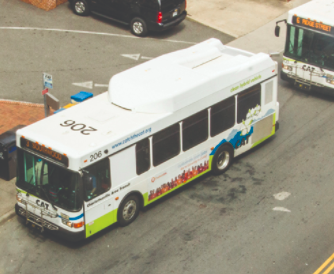Despite support from city firefighters and bus drivers, on Monday Charlottesville City Council unanimously voted not to approve the collective bargaining ordinance proposed in March by Greg Wright of the Charlottesville Professional Firefighters Association. Instead, councilors adopted a resolution allowing City Manager Chip Boyles to draft a new collective bargaining ordinance, as Boyles recommended.
“I do not believe that council has sufficient information to make an informed decision about a particular collective bargaining ordinance,” said Boyles at the meeting. “[We] have a number of decisions to make as to what procedures might best fit the city administration and workforce, how many bargaining units may be authorized, and what departments should and could be included.”
Boyles suggested the city follow the lead of the City of Alexandria and Loudoun County, which hired consultants and gathered input from labor unions for over half a year before adopting collective bargaining ordinances.
Since new state labor laws went into effect in May, Charlottesville Area Transit drivers have been pushing the city to allow them to unionize, primarily to negotiate higher wages. Firefighters have also asked the city to formally recognize the CPFA as a union.
City bus driver Mary Pettis spoke in favor of the unionization efforts during public comment.
“I have driven the bus for 35 years in the City of Charlottesville. I’m here to ask that y’all allow us to have a union, because I feel that it’ll help us get more things that we need,” Pettis said. “I personally had to move from Charlottesville to Waynesboro because I couldn’t afford to live in Charlottesville. I have three jobs because I don’t make enough money just driving the bus.”
“I’m a single parent. I’m not the only driver who has had to do these things,” Pettis continued. “I love driving, I love my passengers. I just need more from it financially.”
“We just want a seat at the table as the professionals that we are,” said Wright during public comment. “We want to…ensure that there’s always a chance for all city employees to be recognized. Wages and benefits is a huge part of this, but it’s really to have that opportunity to have an open and honest dialogue with city management.”
“It shouldn’t take collective bargaining,” said Mayor Nikuyah Walker after hearing Pettis’ comments. “We should figure out as a city how to take care of people. I fully support it, but it shouldn’t come down to who can organize and who can’t.”
Councilor Michael Payne agreed with Boyles’ assessment that the city needed to take enough time to make the ordinance “as powerful as possible,” but emphasized that the city should not take too long to draft it and should look to other unions around the state for a starting point.
“Our goal is to have [an ordinance] finalized during this year’s budget cycle and not delay our employees’ right to collective bargaining,” Payne tweeted after the meeting. “Hopefully this will be one small step towards winning even bigger fights: expanding unionization and repealing ‘right-to-work’ in Virginia.”
Boyles said he planned to present a timeline to council next month, and get the ordinance drafted in time for the FY23 budget year.









